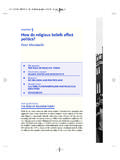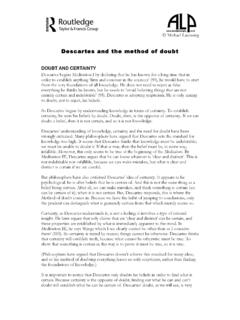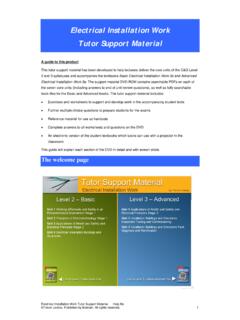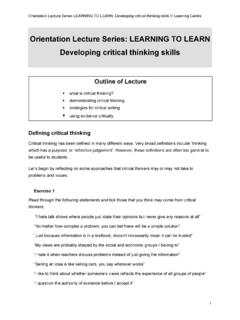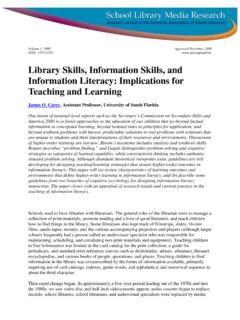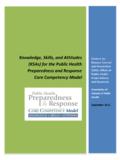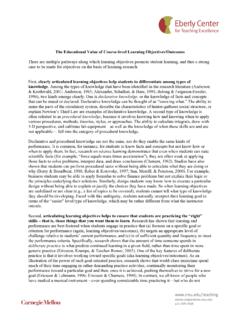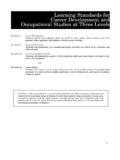Transcription of Communication SKILLS - Routledge
1 MakingworkPractice-BasedLearningCommunic ation resource commissioned by the Making PracticeBased learning Work project, an educationaldevelopment project funded through FDTL Phase 4 Project Number 174/02 and produced by staff from theUniversity of Dixon, Project Manager, University of UlsterMartin O Hara, Management ConsultantAuthorAims and learning Objectives2 Introduction3 Section 1: The Communication Process4 Section 2: Active Listening Skills10 Section 3: Non-verbal Communication13 Section 4: Giving Constructive Feedback18 Section 5: Questioning Skills23 Section 6: Presentation Skills28 Appendix 133 References38 Communication SKILLS contentsCommunication SKILLS 01 AAiimmssThis resource has been compiled to give a general introduction to effective Communication for practice educators.
2 In the first section, the key components of the Communication process will be discussed. The basic SKILLS required foreffective Communication will be explored in the next few sections, and some specific contexts for Communication ,including giving presentations and feedback meetings, will be examined. LLeeaarrnniinngg OObbjjeeccttiivveessOn completion of this resource, you should be able to: Identify the key components of the Communication process. Identify some typical problems that can arise in the Communication process and demonstrate knowledge of SKILLS to overcome these. Demonstrate increased awareness of forms of Communication and social behaviour. Identify and use strategies for managing specific contexts for Communication , including giving SKILLSAims and learning ObjectivesCommunication SKILLS 03 Communication SKILLSI ntroductionAs we progress through our careers in the health or social care environment, the sorts of SKILLS that are critical to oursuccess can change and evolve.
3 Many of us are first responsible for performing specific practical tasks, linked to ourdeveloping knowledge base. Our effectiveness centres upon our actions and our growing expertise at performing at such tasks is often the initial , as we continue to progress, it is likely that success will depend more and more upon our interpersonal SKILLS andour ability to develop effective working relationships with key others. Jobs that include a managerial, supervisory or amentoring role can involve complex relationships with people. Demands can be made that are sometimes conflicting andambiguous. A practice educator s job can involve reconciling and managing these demands. Not surprisingly, interpersonaland Communication SKILLS often rank among the most critical for work related its most straightforward sense, effective Communication may be understood as occurring when the intended meaningof the sender and perceived meaning of the receiver are the same.
4 Yet the level of skill required for effective communicationto occur, belies the simplicity of this definition. After examining studies involving hundreds of large organisations, Goleman(1997) concluded that a high level of individual success at work was characterised by emotional intelligence , or SKILLS ofsocial awareness and Communication . Typically, these included the ability to motivate and influence others, to give honestfeedback sensitively, to empathise and develop relationships, to monitor ones own behaviour, to handle emotions both ofself and others and to read interpersonal situations and organisational politics. However it is important to note thatemotional intelligence, or the SKILLS of social awareness and Communication , can be developed and resource aims to give a basic introduction to the area of effective Communication and will seek to increase yourawareness of forms of Communication , Communication SKILLS and social or interpersonal behaviour therein.
5 A first step in unravelling the complexity of interpersonal Communication is to understand the basic process by whichcommunication occurs. Only then can we identify where possible problems can arise and explore SKILLS for enhancingcommunication and managing such breakdowns. Human beings are not passive, predictable objects who always interpret meanings and react as they are supposed to .Neither is Communication a passive, predictable, one way event. Rather, Communication can be viewed as an activeprocess, influenced by all the complexities and ambiguities of human behaviour. It is also fraught with potential points ofbreakdown. As Clampitt notes, We actively construct meanings within a unique vortex that includes the words used, the context of the utterances, andthe people involved.
6 (2005, )A more accurate way of looking at the process of Communication is probably as a dynamic, circuitous process in whichelements such as non-verbal behaviour and individual styles of interpreting and ascribing meaning to events have significantinfluence. Strategies such as constructing a clear, unambiguous message can encourage effective Communication , but sotoo can seeking to understand meanings imposed by the listener via processes such as actively listening to feedback, aswe shall models have been developed to simplify and summarise the complex reality of the Communication process and to aidour understanding. Some of these are more helpful than others, but all have their shortcomings. The Typical CommunicationModel developed by Clampitt (2005) demonstrates a number of key elements in the Communication SKILLSS ection 1: The Communication ProcessContextSenderReceiverMessageFeedb ackReceiverSenderPerson 1 CHANNELP erson 2 Typical Communication ModelClampitt P(2005) page 30 NOISENOISEC ommunication SKILLS 05 Communication SKILLSS ection 1: The Communication SSeennddiinngg TThhee MMeessssaaggee::Person 1 constructs and sends a message.
7 Messages arethe signals and symbols that we use to convey what wewant to transmit. They can occur in various ways, includingvisual (non-verbal, written), auditory (verbal and sub-vocalspeech), tactile (touch, bodily contact) and olfactory(perfumes, aftershaves) formats. In order to send the message, it must be encoded intowords, as well as tone, inflection, facial expression, andother non-verbal language. While SKILLS such as clearthinking, concise expression of plain english, logicalassociation of ideas and organised speech are important,especially to specific contexts such as giving presentations(see Section 6), they do not ensure that effectivecommunication will take place. The meaning of themessage is not contained solely in the words, as factorssuch as non-verbal cues, the context and the peopleinvolved will heavily influence meaning.
8 It is important tonote that unintended as well as intended meanings may becommunicated via non-verbal leakage. Consider the following exercise: EExxeerrcciissee 11(The scene is a busy open-plan office with a lot of comingand going and background noise).Practice educator:So how did the procedure goyesterday? (Scanning emails on PC, furrows brow, beginstapping keyboard.)Student worker:Emmmm fine. (Spoken quietly inmonotone. Glances toward practice educator, then atothers in the room, then looks to the floor. Hand initiallycovers mouth, and then begins to bite nails).a. Whether intentional or not, what message do youthink the practice educator is sending? b. How much of this is conveyed in words as opposedto non-verbal behaviour?
9 C. What message does the student give in response? SSeeee AAppppeennddiixx 11 ffoorr ssuuggggeesstteedd the sender may not have total control over themessage sent, this can nevertheless be improved anddeveloped through enhancing self-awareness and self-knowledge. Non-verbal behaviour will be explored ingreater detail in Section 3. TThhee CChhaannnneell:: In Clampitt s (2005) model, this refers to the means used todeliver messages and the related formats. Means used tocommunicate can include face to face, telephone, pager,written, radio and video Communication . In face to facecommunication, which is most often preferred forcommunication of more important matters, communicationoccurs through visual, auditory and olfactory formats, whilethe tactile medium may or may not be used.
10 Skilledcommunicators will choose the channel most appropriateto the specific goals sought at that RReecceeiivviinngg tthhee MMeessssaaggee:: For effective Communication to take place, the messagemust be accurately decoded and reconstructed by person2, from the signals received from person 1. However, evenif the "encoding" is carried out very well; this in itself doesnot ensure that it will be "decoded" accurately. The meaningascribed to the message may vary according to the persondoing the interpreting, the context in which the messagewas given and the total information communicated. In terms of the person doing the interpreting, we all haveunderlying beliefs and understandings of the world whichwill influence the ways in which we tend to understand andascribe meaning to incoming data.




